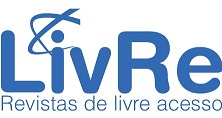EMERGING ENVIRONMENTAL FRAGILITY OF THE SOBRADO RIVER WATERSHED, SOUTHEAST OF TOCANTINS
DOI:
https://doi.org/10.20873/rtg.v12i27.15380Keywords:
geotechnologies, karstic area, land use and land coverAbstract
The modifications produced by human interventions in natural landscapes can generate environmental impacts at different levels. When considering the watershed as an environmental system where nature and society interact, it becomes necessary to understand how natural and anthropic factors interfere with the levels of environmental fragility. The objective of this work was to identify the environmental fragility of the watershed of the Sobrado river, located in the southeast of the state of Tocantins, characterized by the presence of a karstic landscape. Therefore, the methodology consisted of the elaboration of the rainfall map, slope map, and map on the types of soils. The land use and the land cover map were prepared from the interpretation and digital processing of Landsat 8/OLI images, classification supervised by the battacharya method, in the SPRING software. The information was superimposed to obtain the emerging environmental fragility. The results pointed to the identification of the lower class predominant in the basin, including the forms of use and areas of native vegetation cover. The middle class occupied the second position, influenced by the combination of physical and anthropic factors, including soil types, pastures, and native vegetation cover. In addition, the upper class occupies a small area, including the location of rocky outcrops and areas with steeper slopes. It can also be concluded that the area with the highest concentration of caves is under the influence of the middle class with environmental fragility, raising the need for the elaboration of guidelines for environmental planning and adequate land use.
References
ALVES, L. R. F.; MORAIS, F. de. Análise do uso e ocupação do solo no entorno do rio Azuis – Tocantins. Os desafios da Geografia Física na fronteira do conhecimento, v. 1, p. 7353-7365, 2017.
AMARAL, R. do; ROSS, J. L. S. As unidades ecodinâmicas na análise da fragilidade ambiental do Parque Estadual do Morro do Diabo e Entorno, Teodoro Sampaio/SP. GEOUSP – Espaço e Tempo, São Paulo, n. 26, p. 59-78, 2009.
BACANI, V. M. et al. Sensoriamento remoto e SIG aplicados à avaliação da fragilidade ambiental de bacia hidrográfica. Mercator, Fortaleza, v. 14, n. 2, p. 119-135, maio/ago. 2015.
BARROS, M. H. de S. et al. Geotecnologias aplicadas à análise da fragilidade ambiental da bacia hidrográfica do ribeirão Periquito (MS). Ciência Geográfica, Bauru, ano XXIII, n. 1, jan./dez. 2019.
CALÒ, F.; PARISE, M. Evaluating the human disturbance to karst environments in Southern Italy. Acta Carsologica, v. 35, n. 2, p. 47-56, 2006.
CAVALCANTE, J. da C. et al. Fragilidade ambiental potencial e emergente da bacia do rio Mocajuba – PA. Revista Brasileira de Geografia Física, v. 15, n. 3, p. 1417-1433, 2022.
CAVALCANTI, L. C. de S. Cartografia de paisagens: fundamentos. 2. ed. São Paulo: Oficina de Textos, 2018.
CECAV – Centro Nacional de Pesquisa e Conservação de Cavernas. Anuário Estatístico do Patrimônio Espeleológico Brasileiro 2021. 2022. Disponível em: https://www.icmbio.gov.br/cecav/images/stories/downloads/Anuario/CECAV_-_Anuario_estatistico_espeleológico_2021.pdf. Acesso em: 22 mar. 2022.
CECAV – Centro Nacional de Pesquisa e Conservação de Cavernas. Áreas prioritárias para a conservação do Patrimônio Espeleológico. 2018. Disponível em: https://www.icmbio.gov.br/cecav/images/stories/Areas_Prioritarias_Patrimonio_Espeleologico_2018.pdf. Acesso em: 1 jun. 2020.
CREPANI, E. et al. Sensoriamento Remoto e Geoprocessamento aplicados ao zoneamento ecológico-econômico e ao ordenamento territorial. São José dos Campos: Inpe, jun. 2001.
FENG, S. et al. Forestation does not necessarily reduce soil erosion in a karst watershed in southwestern China. Progress in Physical Geography: Earth and Environment, v. 45, n. 01, p. 82-97, 2021.
FERREIRA, Z. A.; MORAIS, F. Diagnóstico físico-conservacionista do ambiente cárstico da Bacia do Córrego Cana-Brava, Aurora do Tocantins (TO, Brasil). Caderno de Geografia, v. 27, n. 50, p. 244-278, 2017.
FONTANA, A.; BALIEIRO, F. de C.; PEREIRA, M. G. Pôster Classes de Solos do Brasil: Sistema Brasileiro de Classificação de Solos. 2021. Disponível em: https://www.embrapa.br/tema-solos-brasileiros/solos-do-brasil. Acesso em: 3 mar. 2021.
GONÇALVES, G. G. G. et al. Determinação da fragilidade ambiental de bacias hidrográficas. Floresta, Curitiba, v. 41, n. 4, p. 797-808, out./dez. 2011.
HARDT, R. Sistema cárstico e impactos antrópicos: considerações sobre o manejo. In: SIMPÓSIO DE PÓS-GRADUAÇÃO EM GEOGRAFIA DO ESTADO DE SÃO PAULO, 1., 2008, Rio Claro - SP. Anais […]. São Paulo: UNESP, 2008. p. 1295-1309.
IBGE – Instituto Brasileiro de Geografia e Estatística. Informações ambientais: pedologia e vegetação. 2020. Disponível em: https://bdiaweb.ibge.gov.br/#/home. Acesso em: 25 fev. 2021.
INPE – Instituto Nacional de Pesquisas Espaciais. Topodata: banco de dados geomorfométricos do Brasil. Variáveis geomorfométricas locais. São José dos Campos, 2008. Disponível em: http://www.dsr.inpe.br/topodata/acesso.php. Acesso em: 30 jun. 2020.
JARBAS, T. et al. Cambissolos. 2006. Disponível em: https://www.agencia.cnptia.embrapa.br/gestor/bioma_caatinga/arvore/CONT000g798rt3o02wx5ok0wtedt3n5ubswf.html. Acesso em: 25 mar. 2021.
LEPSCH, I. F. Formação e conservação dos solos. 2. ed. São Paulo: Oficina de Textos, 2010.
LIANG, B. et al. Analysing and simulating spatial patterns of crop yield in Guizhou Province based on artificial neural network. Progress in Physical Geography: Earth and Environment, v. 45, n. 1, p. 33-52, 2021.
LUO, Y. et al. Modeling soil erosion between 1985 and 2014 in three waterheds on the carbonate-rock dominated Guizhou Plateau, SW China, using WaTEM/SEDEM. Progress in Physical Geography: Earth and Environment, v. 45, n. 1, p. 53-81, 2021.
MIGUEL, A. E. S.; MEDEIROS, R. B.; GOMES, W. M. Emprego do Sensoriamento Remoto e Sistema de Informação Geográfica na avaliação da fragilidade ambiental da bacia hidrográfica do ribeirão São Pedro, Santa Rita do Pardo/MS. Revista Cerrados, Montes Claros, v. 16, n. 2, p. 31-50, ago./dez. 2018.
MÓGA, J. et al. Changes of the karst landscape and epikarst system in the area of the Tapolca karst terrains, North-West Balaton Highlands, Hungary. Forum Geografic, v. XVI, n. 1, p. 12-25, 2017.
OLIVEIRA NETO, M. B. de; SILVA, M. S. L. da. Gleissolos, 2006. Disponível em: http://www.agencia.cnptia.embrapa.br/gestor/territorio_mata_sul_pernambucana/arvore/CONT000gt7eon7k02wx7ha087apz2kfhpkns.html#. Acesso em: 25 mar. 2021.
PACHECO, F. F.; CASTRO, J. F. M. A fragilidade ambiental como instrumento de planejamento ambiental em unidades de conservação: o caso da APA Serra da Piedade-MG. Entre Lugar, v. 13, n. 25, p. 117-152, 2022.
PARISE, M.; GUNN, J. Natural and Anthropogenic Hazards in Karst Areas: Recognition, Analysis and Mitigation. Geological Society, London, Special Publications, n. 279, p. 1-3, 2007.
PILÓ, L. B.; AULER, A. S. Introdução à Espeleologia. 2019. Disponível em: https://www.researchgate.net/publication/336831313_Introducao_a_espeleologia/citation/download. Acesso em: 23 abr. 2020.
PILÓ, L. B.; AULER, A. Introdução à Espeleologia. In: ICMBio – Instituto Chico Mendes de Conservação da Biodiversidade. IV Curso de Espeleologia e Licenciamento Ambiental. 2013. p. 7-24. Disponível em: https://www.terrabrasilis.org.br/ecotecadigital/index.php/estantes/espeleologia/2196-iv-curso-de-espeleologia-e-licenciamento-ambiental. Acesso em: 1 dez. 2020.
PORTAL AGRITEMPO – Sistema de Monitoramento Agrometereológico. Dados imagens TRMM (Tropical Rainfall Measuring Mission). 2021. Disponível em: https://www.agritempo.gov.br/agritempo/index.jsp. Acesso em: 16 jan. 2022.
ROSS, J. L. S. Análise empírica da fragilidade dos ambientes naturais e antropizados. Revista do Departamento de Geografia, n. 8, p. 63-74, 1994.
ROSS, J. L. S. Ecogeografia do Brasil: subsídios para o planejamento ambiental. São Paulo: Oficina de textos, 2006.
ROSS, J. L. S. Geomorfologia aplicada aos EIAs-RIMAs. In: GUERRA, A. J. T.; CUNHA, S. B. da (org.). Geomorfologia e meio ambiente. 9. ed. Rio de Janeiro: Bertrand Brasil, 2010. p. 291-336.
SANTOS, R. F. dos. Planejamento ambiental: teoria e prática. São Paulo: Oficina de Textos, 2004.
SILVA, V. C. B.; MACHADO, P. S. SIG na análise ambiental: susceptibilidade erosiva da bacia hidrográfica do córrego Mutuca, Nova Lima – Minas Gerais. Revista de Geografia, v. 31, n. 2, p. 66-87, 2014.
SEPLAN – Secretaria do Planejamento e da Modernização da Gestão Pública. Atlas do Tocantins: subsídios ao planejamento da gestão territorial. 6. ed. Palmas: SEPLAN, 2012. Disponível em: http://zoneamento.sefaz.to.gov.br/TO_AtlasTocantins2012_1/Atlas_do_Tocantins_2012.pdf. Acesso em: 5 maio 2020.
SOUSA, D. M. G. de; LOBATO, E. Latossolos. 2006. Disponível em: http://www.agencia.cnptia.embrapa.br/Agencia16/AG01/arvore/AG01_96_10112005101956.html. Acesso em: 25 mar. 2021.
SOUZA, T. A. R.; AULER, A. S. (org.). O Carste de Vazante-Paracatu-Unaí: revelando importâncias, recomendando refúgios. Belo Horizonte: Carste, Ciência e Meio Ambiente, 2018.
SPÖRL, C.; ROSS, J. L. S. Análise comparativa da fragilidade ambiental com aplicação de três modelos. Revista GEOUSP – Espaço e Tempo, São Paulo, n. 15, p. 39-49, 2004.
TOCANTINS. Secretaria de Recursos Hídricos e Meio Ambiente. Plano da Bacia Hidrográfica do Rio Palma. 2007. Disponível em: https://central3.to.gov.br/arquivo/269425/. Acesso em: 25 jun. 2020.
TRICART, J. Ecodinâmica. Rio de Janeiro: IBGE, 1977.
TROMBETA, L. R. et al. Análise da fragilidade potencial e emergente do relevo na unidade de gerenciamento de recursos hídricos Pontal do Paranapanema, São Paulo, Brasil. Caderno Prudentino de Geografia, Presidente Prudente, n. 36, v. especial, p. 159-173, 2014.
USGS – United States Geological Survey. Landsat Colection 1. 2019. Disponível em: https://www.usgs.gov/core-science-systems/nli/landsat/landsat-collection-1?qt-science_support_page_related_con=1#qt-science_support_page_related_con. Acesso em: 5 ago. 2021.
VALLE, I. C.; FRANCELINO, M. R.; PINHEIRO, H. S. K. Mapeamento da fragilidade ambiental na bacia do rio Aldeia Velha, RJ. Floresta e Ambiente, v. 23, n. 2, p. 295-308, 2016.
VIEIRA, R. dos S. et al. Fragilidade ambiental emergente da bacia hidrográfica do rio Santa Maria do Doce - ES, Brasil. Revista Brasileira de Geografia Física, v. 14, n. 3, p. 1253-1267, 2021.
WILLIAMS, P. W. Karst Terrains, Environmental Changes and Human Impact: Cremingen-Destedt, Germany. Catena Supplement, n. 25, 1993.
ZARONI, M. J.; SANTOS, H. G. dos. Cambissolos. 2006. Disponível em: https://www.agencia.cnptia.embrapa.br/gestor/solos_tropicais/arvore/CONTAG01_8_2212200611538.html. Acesso em: 25 mar. 2021.
Downloads
Published
How to Cite
Issue
Section
License
Copyright (c) 2023 Tocantinense Journal of Geography

This work is licensed under a Creative Commons Attribution-NonCommercial-NoDerivatives 4.0 International License.
Revista Tocantinense de Geografia does not remunerate any author for the publication of their texts. The contents of the texts published in this journal are the responsibility of the authors.








.png)












